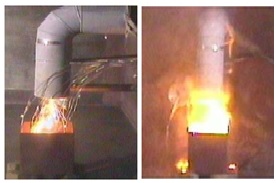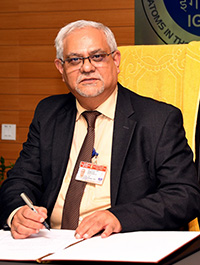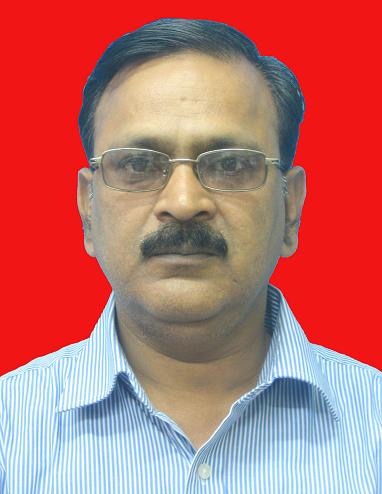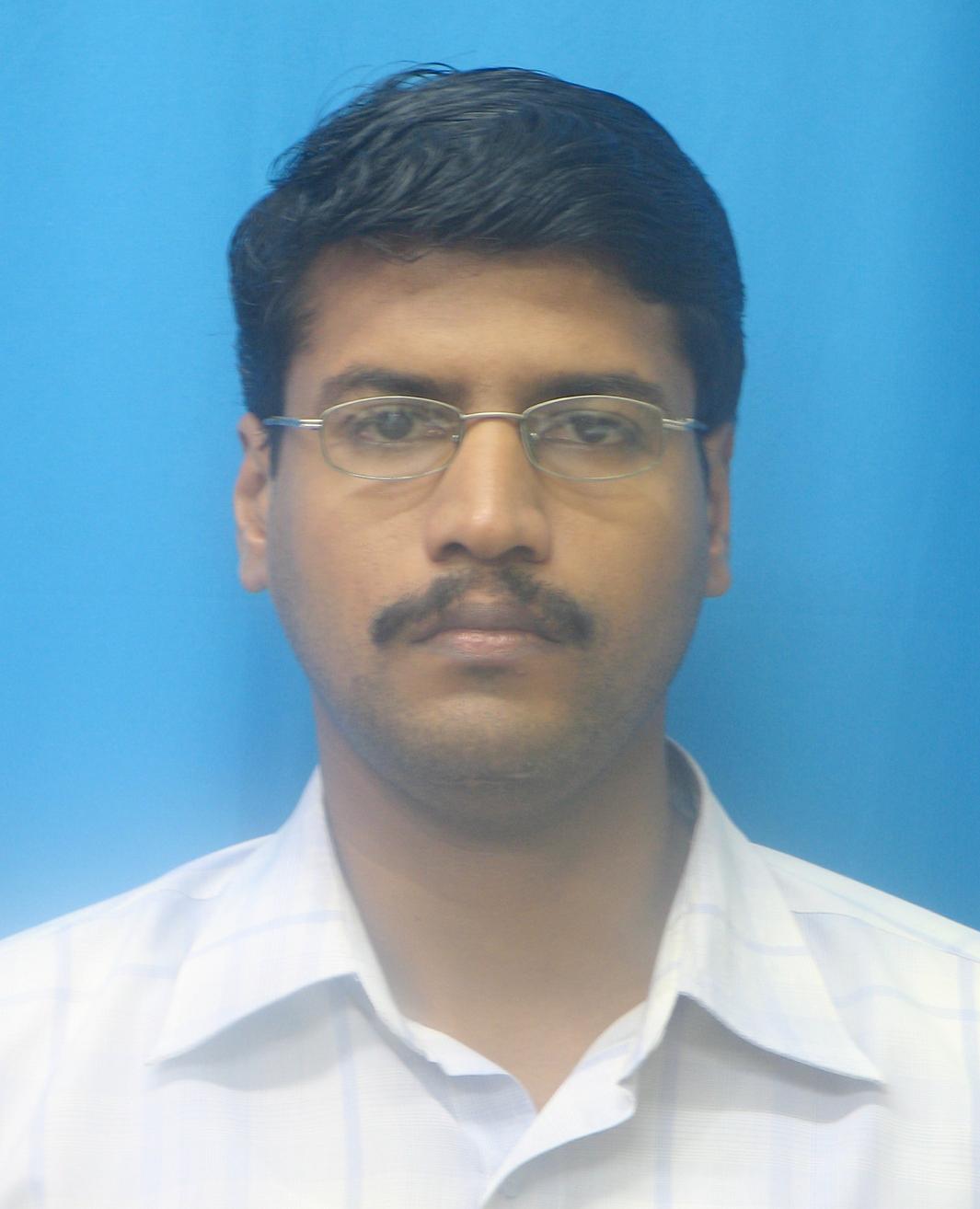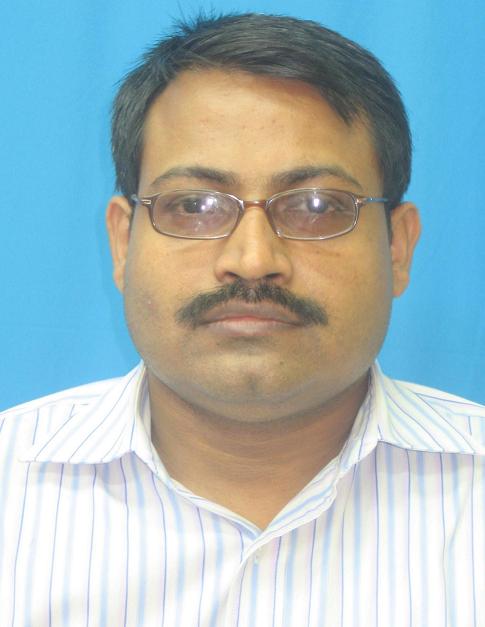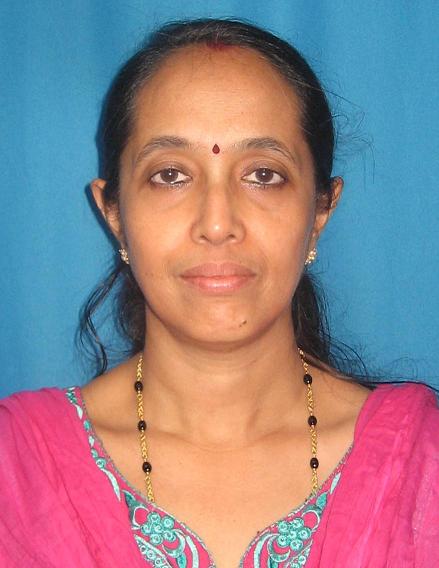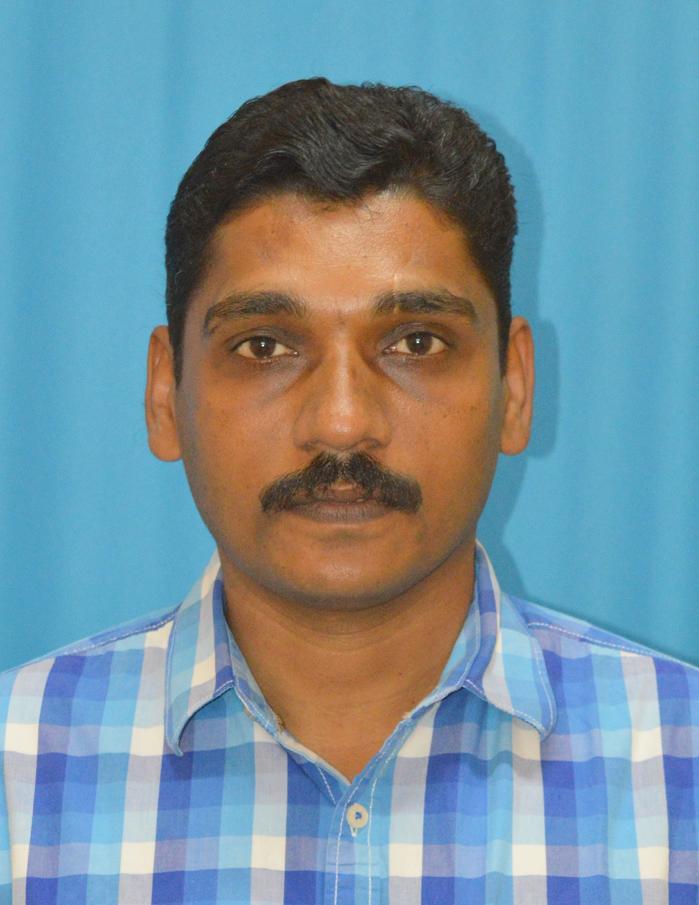Civil Engineering Group
Organization
Mandate
 Civil Engineering Group (CEG) is primarily created with the intention of developing all the required infrastructures for the mission of IGCAR. Mandate of CEG is Construction of laboratories, industrial buildings and services beginning with the conceptual design to Construction and its associated maintenance, for IGCAR’s mission of ‘Fast reactor development and its associated fuel cycles.
Civil Engineering Group (CEG) is primarily created with the intention of developing all the required infrastructures for the mission of IGCAR. Mandate of CEG is Construction of laboratories, industrial buildings and services beginning with the conceptual design to Construction and its associated maintenance, for IGCAR’s mission of ‘Fast reactor development and its associated fuel cycles.
 CEG undertakes in-house and collaborative research projects in civil engineering aspects of Fast breeder reactor.
CEG undertakes in-house and collaborative research projects in civil engineering aspects of Fast breeder reactor.
 CEG has been keeping pace with progress and update in engineering, design and Construction with technical advances. Engineering, analysis and design have undergone remarkable changes with the availability of latest codes and software and inhouse computer codes developed by the group which helps in solving complex problems.
CEG has been keeping pace with progress and update in engineering, design and Construction with technical advances. Engineering, analysis and design have undergone remarkable changes with the availability of latest codes and software and inhouse computer codes developed by the group which helps in solving complex problems.
 Concrete production and delivery have been improved, with automated mixing plants and stringent quality control. Special types of concretes have been developed and the group has proved itself in providing technical support in design of major projects like PFBR 500MWe and associated fuel cycle facilities, structures and several R&D works related to concrete.
Concrete production and delivery have been improved, with automated mixing plants and stringent quality control. Special types of concretes have been developed and the group has proved itself in providing technical support in design of major projects like PFBR 500MWe and associated fuel cycle facilities, structures and several R&D works related to concrete.
 The group has developed expertise in characterization of site for safety related structures including geotechnical investigation.
The group has developed expertise in characterization of site for safety related structures including geotechnical investigation.
 As the plant site has crossed 50 years, CEG has taken a mandate of structural assessment and ageing management of long radiological facilities, laboratories and conventional buildings, to assess their strength and probable remaining life left out.
As the plant site has crossed 50 years, CEG has taken a mandate of structural assessment and ageing management of long radiological facilities, laboratories and conventional buildings, to assess their strength and probable remaining life left out.
Highlights
| Year | Milestones |
|---|---|
| 2021 | |
| Construction of rml nitrogen plant | |
| Construction of zonal workshop extension | |
| Construction of security morcha for FBTR gate | |
| 2020 | |
| Construction of WSCD-II,chemical storage& sub station | |
| Construction of extension of PDC-V | |
| 2019 | |
| Construction of RCC over head tank and ug sump in north plant site | |
| Construction of DAE Guest house-Pallavaram | |
| Construction of AERB SRRC building –Pallavaram | |
| Construction of machnism simulation & testing facility | |
| Construction of PIF LAB Extension – Floor I & II | |
| Construction of parking lot (400CARS & 1100 2-WHEELER) | |
| 2018 | |
| Construction of new security building at new IGCAR main gate | |
| Construction of DFRP guard house first flooR | |
| Construction of nuclear clean hall facility | |
| Construction of hostel & PDF BLOCK in DAE nodal centre, Pallavaram, Chennai | |
| 2017 | |
| Construction of FBR Annex building – Floor III & IV | |
| Construction of MMG Phase 3 building | |
| Construction of Sodium De-contamination Plant | |
| Construction of STF First Floor | |
| Construction of Engineering Hall –V Sodium technology complex | |
| Construction of permenant structures for 3 AAD Stations | |
| 2016 | |
| Construction of security building at Kunnathur, Kokilamedu | |
| Construction of PPRD neutralization building | |
| Construction of MMG PHASE-II Building | |
| 2015 | |
| Diamond Jubilee commemorative structure | |
| Construction of radar platform for AAD | |
| Construction of EID&RTSD Lab Building | |
| Construction OF Substation Building for EH-V | |
| Construction OF FBTR Service Building | |
| 2014 | |
| Sodium Fire Experimental Facility | |
| Construction of ANDE First floor | |
| Construction of MICA – I & II Floor | |
| Construction of Experimental Hall for SRI, AERB | |
| Construction of Central AC Plant | |
| Construction of CMPL Building Extension | |
| 2013 | |
| Construction OF HTER BUILDING | |
| STRUCTURAL DYNAMIC LAB | |
| MAIN GATE Complex | |
| FBR ANNEX Building | |
| Construction OF Engineering Hall –IV | |
| 2012 | Construction OF CIVIL R&D Building |
| 2011 | Construction OF UGC-DAE Consortium |
| 2010 | Construction OF IFSB Building |
| 2009 | Construction of PRE Project Buidlings for FRFCF |
| 2006 | Site selection for FRFCF |
| 2004 | PFBR nuclear island design completion and regulatory clearance for first pour of concrete |
| 2003 | Construction of site assembly shop (PFBR) |
| 2000 | Construction of SGTF |
| 1990 | Construction of KARP/DFRP |
| 1989 | Construction of HALL 3 |
| 1982 | Construction OF Computer Centre and EID building |
| 1978 | Construction of Materials Development Laboratory |
| 1977 | Construction OF RADIO METALLURGY Laboratory |
| 1976 | |
| Construction of Safety Research Laboratory | |
| Construction OF Materials Science Laboratory | 1975 |
| Construction of Reprocessing Development Laboratory | |
| Construction of Central Workshop | |
| Construction of Central Water Chilling Plant | |
| 1973 | Construction of Central Design office |
| 1972 | Construction of Engineering Halls |
| 1971 | |
| Reactor Research Centre (RRC) Established | |
| FBTR Civil Construction Begins |
Expertise
Achievements
Major achievements of Civil Engineering group are:
- In the process of evolving state of art facilities and to respecting economical design without compromising codal requirements several unique structures and facilities were evolved and designed by CEG like large industrial engineering halls, unique R&D facilities housing radioactive cells, large span stores building and central workshop with folded plate roof, tall engineering hall facilities to have LCTR with large span having left in form work supported over truss for 18m span, central design office with waffle slab arrangement with economically design slab, 350 seated auditorium of state of art facilities with acoustical proof wall paneling, unique triangular column supported bridge, Fast Breeder Test Reactor so on so forth.
- Prequalification, tendering and evaluation for various projects; detailed estimation, prequalification process, detailed estimation scrutiny, call of tender and its evaluation of sanctioned projects; preparation of block estimate for civil building works, item specifications, award of technical sanction and release of notice inviting tender and involving special concretes for the execution of projects.
- Development of Estimate module for preparation of estimate using standardized item description, which at the click of a button will fetch and form the BOQ from the data bank. The estimate will be priced for cost from the hidden schedule of rates for various civil & architectural items.
- Analysis, design and Construction of safety related and non-safety related civil engineering buildings - PFBR Nuclear Island Building, HEF, IFSB etc.
- Seismic re-evaluation of nuclear safety related buildings viz. FBTR civil structures Reactor Building, Service building, Cooling tower, RCB Isolation wall and DFRP structures – Process building, Fuel handling building, Exhaust fan building, stack.
- Quality assurance and quality control of Construction and Construction materials.
- 50 Publications in conferences and technical journals.
- Group achievement awards for design, Construction, commissioning & licensing of interim fuel storage facilities to FRFCF, ROMG, SEG, CEG, and EIRSG & NFC, SFCT
Facilities
Structural Analysis & Design of Tall Structures
Tall buildings pose unique challenges in the design and Construction. Tall buildings are generally flexible with the time period of vibration in the range of a few seconds and therefore have to be designed for special wind effects like Gust and across wind oscillation due to vortex shedding.
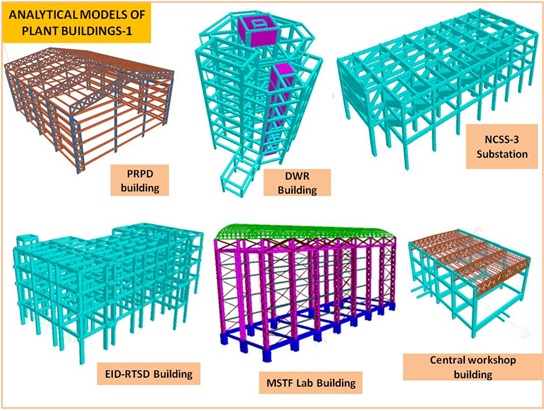
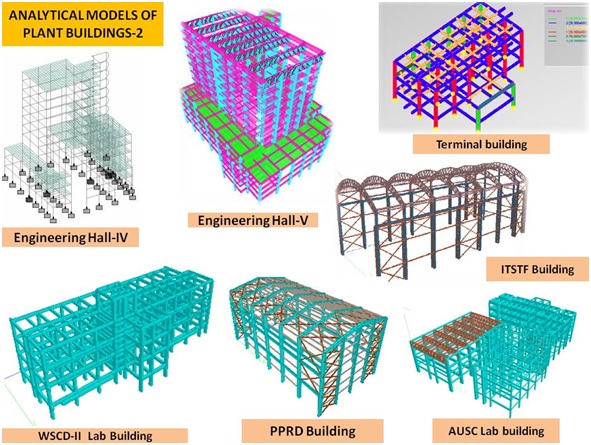
The lateral drift has to be controlled to maintain occupant comfort by provision of shear walls and RC core. Engineering Halls I to V, SGTF, Stacks, Overhead water tanks, are some of tall structures in RCC designed and constructed by CEG. Apart from RCC structures, tall pre-engineered steel structures such as PPRD & MSTF, lab buildings like PRPD, DWR, EID-RTSD, ITSTF and AUSC are also designed and constructed by A&SED.
Seismic Re-evaluation
The assessment of safety of an existing Nuclear Facility is undertaken to determine the seismic risk of the plant with respect to current a seismic design specification.
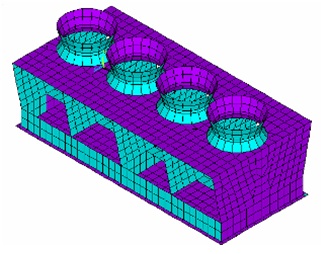
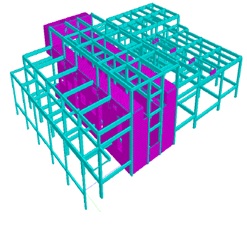
Methodologies have been developed to take advantage of reserve strength of concrete and Specific computational tools have been developed for the seismic re-evaluation of R.C.C structures for review level earthquake ground motion. Seismic re-evaluation of Civil Engineering Structures of FBTR, DFRP have been carried out.
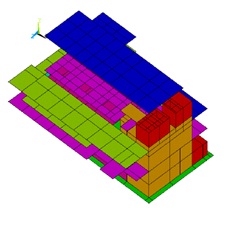
Analytical model of Exhaust fan building (left) and DFRP Zone-VI building (right)
For analysis and design of Civil Engineering Structures including Nuclear Safety related Structures, a host of computer programs and tools have been developed for various applications such as:
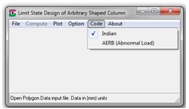
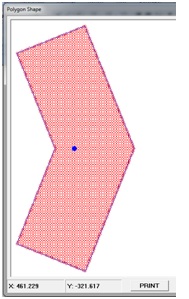
- Missing mass correction tool for response spectrum analysis.
- Development of Floor response spectra in FE model for the qualification of equipment
- Simulation of soil structure interaction
- Limit state concrete design of beam, columns, footings as per Indian/ AERB/ ACI standards
- Design of arbitrary shaped column sections for biaxial bending
- Analysis and Design of Embedded plate and anchorage in concrete for supporting equipment
- Computer program for CDFM based seismic margin assessment for finding HCLPF factor of safety related buildings
- Moment curvature and hinge definitions for non-linear static pushover analysis for SMA
- Computer program for Seismic re-evaluation of safety related R.C structures
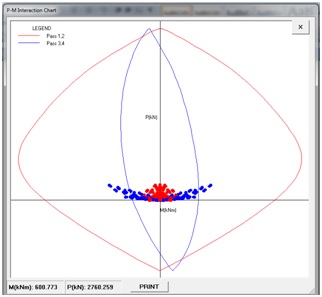
Structural Analysis & Design of Tall Structures
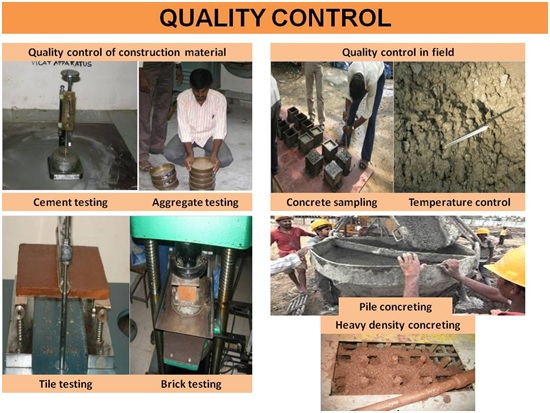
Testing quality of concrete making materials like Cement, Aggregates, Water, Admixtures, etc., Drinking water, Construction water and sewage water testing for various DAE constituents in Kalpakkam.
Designing of Concrete mix proportions and field control of concreting (mass concrete heavy density concrete, high performance concrete etc.), road works for IGCAR, and other DAE constituents at Kalpakkam.
Pre-qualification ready mix concrete plant, Fly ash brick manufacturing units, for DAE projects in Kalpakkam. Approval of cement, reinforcement steel, admixtures etc. brands.
Condition Assessment and Ageing Management of buildings
Structural health assessment of reinforced concrete buildings is part of ageing management. The goal of ageing management is to address systematically all the time-dependent parameters that can jeopardize the safety of the building during its life.
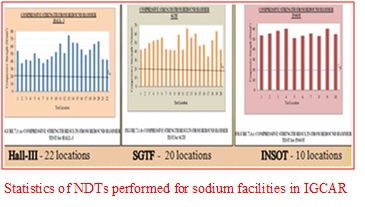
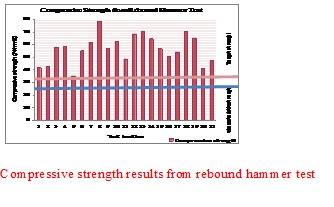
Concrete is a durable material, however, experience shows that ageing degradation of concrete structures, often caused or accelerated by factors such as faulty design, use of unsuitable or poor quality materials, improper Construction.exposure to aggressive environments, excessive structural loads and accident conditions, can impair the safety functions of concrete structures and can increase risks to public health and safety.
Effective ageing management of concrete structures is required to ensure their fitness for service. Concrete Laboratory team inspects buidlings to assess for spalling, cracking and depletion of concrete membres and brick masonrythrough visual examination and further conducts necessary Non Destructive Testing and ascertain soundness of embeddded reinforcement by conducting relevant field & laboratory tests and takes up necessary repair if necessary following national and international standards.
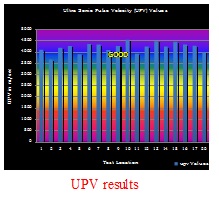
Geo polymer concrete (GPC)
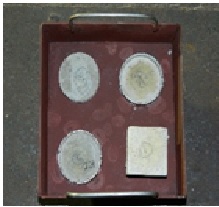
An alternate concrete based on industrial waste products have been developed to replace conventional lime stone concrete used as a sacrificial layer in FBR. Cube specimen were cast and tested in hot sodium at MINA facilities of SED- SQRMG. Initial studies of hot sodium interaction with GPC gave better results.
Hence, Ten different mixes with varying proportions of fly ash and GGBS were developed and tested in Hot sodium. The results are analyzed and optimum mix identified (3 Nos. considering strength parameters) for further characterization such as abrasion resistance.
